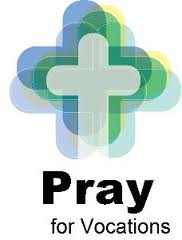 Last week the editors of the National Catholic Register offered the following response to the question, “How do I know what my vocation is?” In doing so, they quote Servant of God John A. Hardon, the beloved founder of the Institute on Religious Life.
Last week the editors of the National Catholic Register offered the following response to the question, “How do I know what my vocation is?” In doing so, they quote Servant of God John A. Hardon, the beloved founder of the Institute on Religious Life.
“A religious vocation is a special grace that God gives to certain persons, calling them to a life of the evangelical counsels,” wrote Jesuit Father John Hardon, whose canonization cause is under way, as chronicled at EWTN.com. “What are some typical features of a true vocation to the religious life? I would emphasize especially three: 1) a strong faith in the Catholic Church and her teaching, shown by a firm loyalty to the Vicar of Christ; 2) a love of prayer, at least the capacity for developing a desire for prayer; and 3) a readiness to give oneself to a life of sacrifice in the footsteps of Jesus Christ. . . . I believe that if every prospective candidate were to make a private retreat, even for a few days, under a competent priest, it would help immensely. The retreat could be especially geared to a person who thinks that he or she has a vocation to the religious life. Then, during the retreat, in an atmosphere of silence and prayer, ask God to enlighten one’s mind as to whether or not he is calling the person to a life of Christian perfection. This, in fact, is one of the original purposes of the Spiritual Exercises of St. Ignatius: to discover and decide on one’s state of life.” Continue reading How Do I Know?
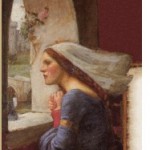 Check out
Check out 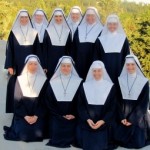 The National Catholic Register published last week an article chronicling the journey of fifteen sisters who broke away from their sedevacantist community in 2007 to form the
The National Catholic Register published last week an article chronicling the journey of fifteen sisters who broke away from their sedevacantist community in 2007 to form the 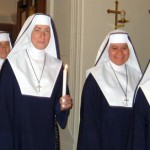 Sr. Mary Eucharista, a member of the
Sr. Mary Eucharista, a member of the 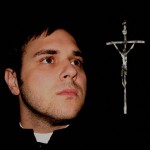 In 2007, Fr. Joseph Fessio of Ignatius Press and Cardinal Raymond Burke, then Archbishop Burke of St. Louis, teamed with actor and playwright Kevin O’Brien to launch the Theater of the Word production company to spread the Gospel message through stage, film, television, audio recordings and the internet.
In 2007, Fr. Joseph Fessio of Ignatius Press and Cardinal Raymond Burke, then Archbishop Burke of St. Louis, teamed with actor and playwright Kevin O’Brien to launch the Theater of the Word production company to spread the Gospel message through stage, film, television, audio recordings and the internet.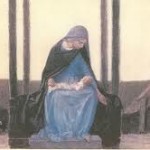 Today, as we celebrate the Queenship of Mary, I thought I would offer you the following excerpt from Pope Benedict XVI’s Wednesday Audience last week, in which he continued his series of reflections on prayer, which truly is the lifeblood of all vocations in Christ:
Today, as we celebrate the Queenship of Mary, I thought I would offer you the following excerpt from Pope Benedict XVI’s Wednesday Audience last week, in which he continued his series of reflections on prayer, which truly is the lifeblood of all vocations in Christ: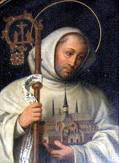 Tomorrow is the feast day of St. Bernard of Clairvaux (1090-1153), the great Cistercian monk. For many people, unfortunately, St. Bernard is merely a big, lovable breed of working dog. Even those of us with Catholic sensibilities might not know too much about him. Maybe we remember that he was devoted to Our Lady (which saint wasn’t?), and that he is believed to be the author of the prayer commonly known as the Memorare (”Remember, O most gracious Virgin Mary . . .”). But even that’s probably pushing it.
Tomorrow is the feast day of St. Bernard of Clairvaux (1090-1153), the great Cistercian monk. For many people, unfortunately, St. Bernard is merely a big, lovable breed of working dog. Even those of us with Catholic sensibilities might not know too much about him. Maybe we remember that he was devoted to Our Lady (which saint wasn’t?), and that he is believed to be the author of the prayer commonly known as the Memorare (”Remember, O most gracious Virgin Mary . . .”). But even that’s probably pushing it. In a
In a 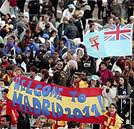 World Youth Day officially opened today. I just saw an article in the current issue of
World Youth Day officially opened today. I just saw an article in the current issue of 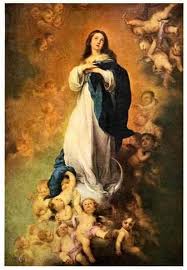 While today is the solemnity of the Assumption of the Blessed Virgin, it is not a holy day of obligation this year because it falls on a Monday. Still, it’s a special feast day and we do well to celebrate as much as our state in life allows.
While today is the solemnity of the Assumption of the Blessed Virgin, it is not a holy day of obligation this year because it falls on a Monday. Still, it’s a special feast day and we do well to celebrate as much as our state in life allows.